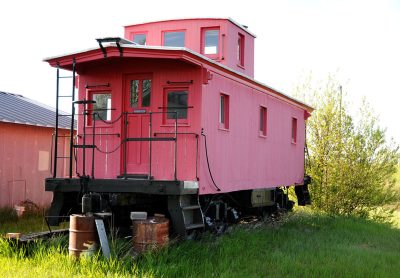 At the Train Shed dedication on October 2, 2010, the daughter of the late Jack Hoover of Belt, Montana announced the donation of his caboose to the Northwest Railway Museum. Christina Blackwell selected the Northwest Railway Museum to receive her father’s caboose “so it can be housed inside the new Train Shed exhibit building and be accessible to the public.” Initially, the caboose will be used as part of the Museum’s Wellington Remembered exhibit and is typical of the type of car that could have operated through that Great Northern company town.
At the Train Shed dedication on October 2, 2010, the daughter of the late Jack Hoover of Belt, Montana announced the donation of his caboose to the Northwest Railway Museum. Christina Blackwell selected the Northwest Railway Museum to receive her father’s caboose “so it can be housed inside the new Train Shed exhibit building and be accessible to the public.” Initially, the caboose will be used as part of the Museum’s Wellington Remembered exhibit and is typical of the type of car that could have operated through that Great Northern company town.
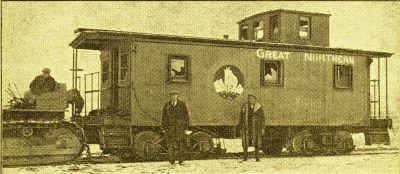
Caboose X101 (the first X101) was built in 1892 at St Cloud, Minnesota. A wreck-related rebuilding in 1897 and again in 1909 resulted in changes to the visual and structural characteristics of the car, but few changes have occurred since then or after retirement in 1935. Conductor Ed Shields of Great Falls retired that year too and asked the company if he could keep the caboose. They obliged him and he used a bull dozer to move the caboose 1.5 miles to his back yard. Fast forward to 1973. Jack Hoover had an opportunity to purchase the X101 and despite its then-deteriorated condition, he acquired it and moved it to his home in Belt. Years of dedicated care transformed it back to its former glory.
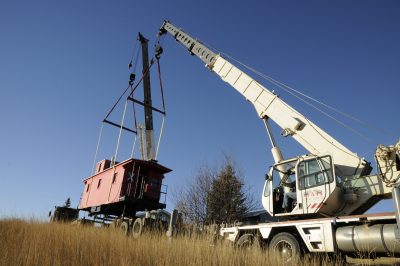
Receiving a donation and moving it to the Museum are significant undertakings when the object weighs 33,000 pounds and is located 650 miles from Snoqualmie. The Museum faced similar challenges when Chapel Car 5
Messenger of Peace was donated in 2007 and was able to draw on that experience to plan and execute the move of X101.
Heavy Haul Inc. of Kelso, Washington was selected to move the caboose. (They did an excellent job of transporting the chapel car and specialize in unusual moves including railroad cars.)
H & H Crane Service of Great Falls, Montana lifted the caboose and trucks and placed them on the truck for shipping. In Snoqualmie, Imhoff Contractor Crane Service reassembled the caboose on the Museum’s rail line. (Imhoff has been involved in a variety of Museum projects including construction of the Train Shed, Conservation and Restoration Center, Bridge 31.3 and with the chapel car move.) With completion of the move, the X101 is sitting on live rail for the first time since 1935.
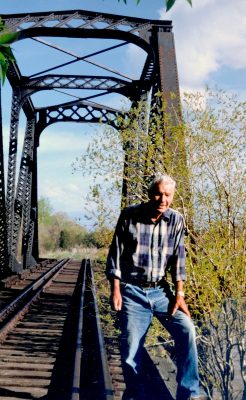
Jack Hoover was a much beloved man who resided in Belt, Montana, about 20 miles from Great Falls. He was born on April 17, 1923 and lived in the area for his entire 86 years, except for 4 years of military service in WW II. He had strong interests in several fields and was renowned for his collections of guns, railroad memorabilia, western art, books and industrial architecture. Some of his firearms and western art will be perpetuated at the
C.M. Russell Museum in Great Falls; his drover’s coach has been preserved at the
Minnesota Transportation Museum in St. Paul. A beautiful tribute to his life was detailed by Prairie Mary in her blog
here. Mr. Hoover is survived by his wife Karen and daughter Christina, and by countless friends.
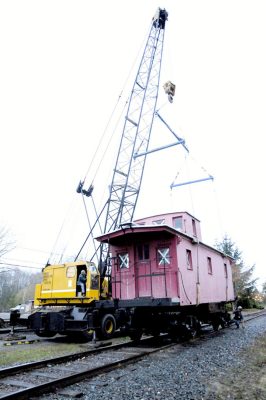
The Northwest Railway Museum is honored to have been selected as the recipient of caboose X101 and is incredibly grateful for the family’s generosity. The caboose will be placed inside the Train Shed exhibit building in early 2011 and will be placed on public exhibit when that facility opens later in the year. It is a tribute to the late Jack Hoover that the caboose be preserved for this and future generations, and that it be used to interpret the role railroads played in the settlement and development of the Northwest.
 At the Train Shed dedication on October 2, 2010, the daughter of the late Jack Hoover of Belt, Montana announced the donation of his caboose to the Northwest Railway Museum. Christina Blackwell selected the Northwest Railway Museum to receive her father’s caboose “so it can be housed inside the new Train Shed exhibit building and be accessible to the public.” Initially, the caboose will be used as part of the Museum’s Wellington Remembered exhibit and is typical of the type of car that could have operated through that Great Northern company town.
At the Train Shed dedication on October 2, 2010, the daughter of the late Jack Hoover of Belt, Montana announced the donation of his caboose to the Northwest Railway Museum. Christina Blackwell selected the Northwest Railway Museum to receive her father’s caboose “so it can be housed inside the new Train Shed exhibit building and be accessible to the public.” Initially, the caboose will be used as part of the Museum’s Wellington Remembered exhibit and is typical of the type of car that could have operated through that Great Northern company town. Caboose X101 (the first X101) was built in 1892 at St Cloud, Minnesota. A wreck-related rebuilding in 1897 and again in 1909 resulted in changes to the visual and structural characteristics of the car, but few changes have occurred since then or after retirement in 1935. Conductor Ed Shields of Great Falls retired that year too and asked the company if he could keep the caboose. They obliged him and he used a bull dozer to move the caboose 1.5 miles to his back yard. Fast forward to 1973. Jack Hoover had an opportunity to purchase the X101 and despite its then-deteriorated condition, he acquired it and moved it to his home in Belt. Years of dedicated care transformed it back to its former glory.
Caboose X101 (the first X101) was built in 1892 at St Cloud, Minnesota. A wreck-related rebuilding in 1897 and again in 1909 resulted in changes to the visual and structural characteristics of the car, but few changes have occurred since then or after retirement in 1935. Conductor Ed Shields of Great Falls retired that year too and asked the company if he could keep the caboose. They obliged him and he used a bull dozer to move the caboose 1.5 miles to his back yard. Fast forward to 1973. Jack Hoover had an opportunity to purchase the X101 and despite its then-deteriorated condition, he acquired it and moved it to his home in Belt. Years of dedicated care transformed it back to its former glory. Receiving a donation and moving it to the Museum are significant undertakings when the object weighs 33,000 pounds and is located 650 miles from Snoqualmie. The Museum faced similar challenges when Chapel Car 5 Messenger of Peace was donated in 2007 and was able to draw on that experience to plan and execute the move of X101.
Receiving a donation and moving it to the Museum are significant undertakings when the object weighs 33,000 pounds and is located 650 miles from Snoqualmie. The Museum faced similar challenges when Chapel Car 5 Messenger of Peace was donated in 2007 and was able to draw on that experience to plan and execute the move of X101.



I am Ed Shields grand nephew. I noticed the photo of him standing in front of the caboose as it was being readied to be towed to his home. I am very interested in knowing where the photo came from, if there are more photos, and are copies available. I met Jack Hoover in the 1980's before he fully restored the caboose, and as recent as 2008 was in the caboose and took numerous photos. I am curious, are the items Jack had in the caboose going with it to the museum? He had a very authentic representation of the interior of a caboose.
Yes, the caboose is appointed with tools, oil lamps, lanterns, markers, and even journal oil.
I'm not sure where the photo of Ed Shields is from – I got a copy from someone with the Great Northern Railway Historical Society – but it was the only one.
Do you have a GNRHS contact that I could email to find out more on the photo? Also, you mention the tools, lamps, etc… was the furniture, signs, floor mats, etc. also left in the caboose for your display? Would you like photos of the interior that I took in 2008?
Please get in touch with the Snoqualmie Depot at 425.888.3030 and leave your contact information so a curator can contact you.
I left a message for someone to call me as well as my #, so far no return call.
Physics students at Cuesta College (San Luis Obispo, CA, USA) analyze the forces and torques on the caboose exerted by the cranes:
http://waiferx.blogspot.com/2013/12/physics-205a-midterm-2-fall-semester.html
It was a beneficial workout for me to go through your webpage. It definitely stretches the limits with the mind when you go through very good info and make an effort to interpret it properly. I am going to glance up this web site usually on my PC. Thanks for sharing paving contractor Wellington